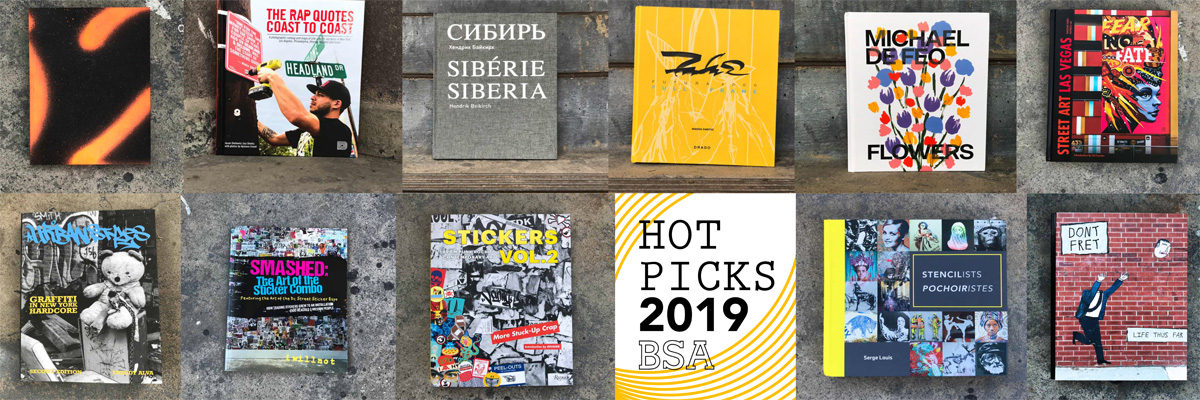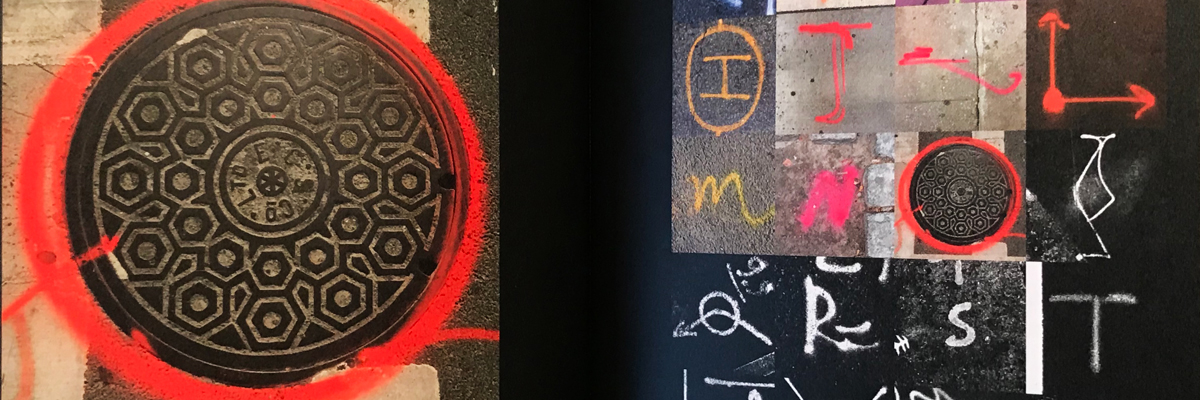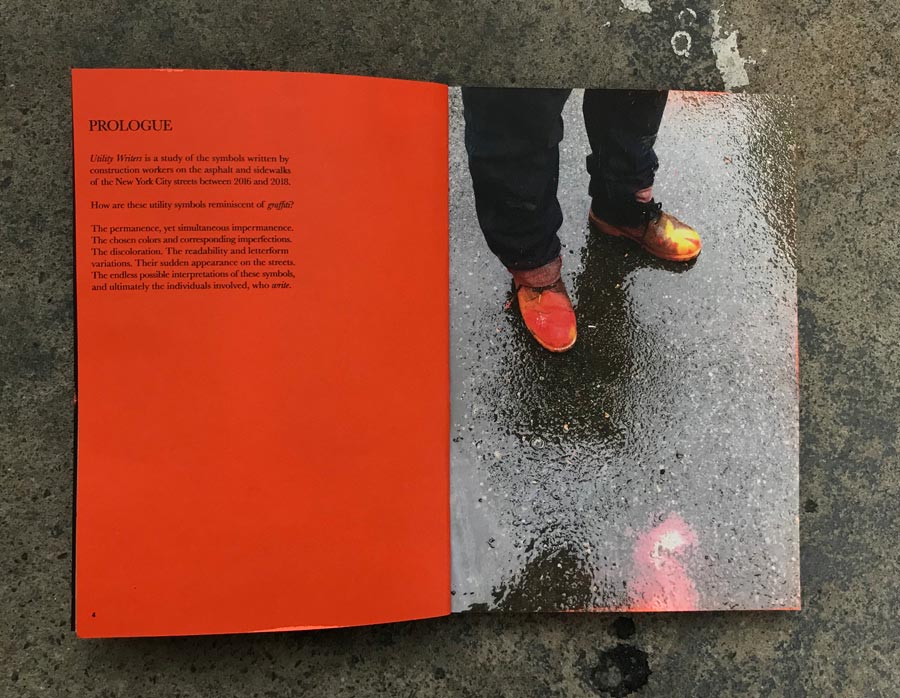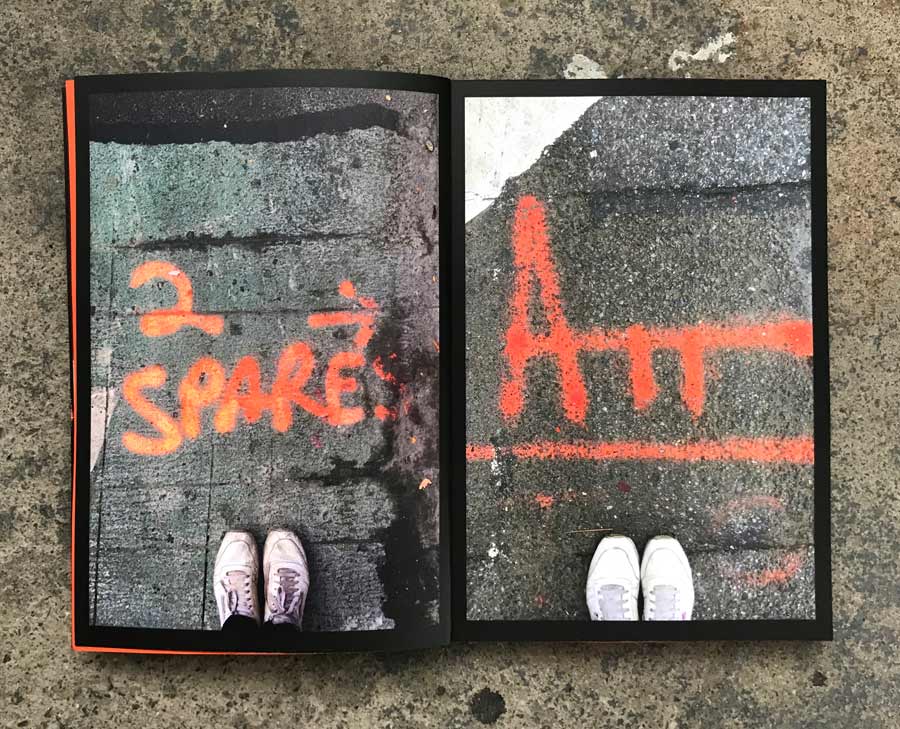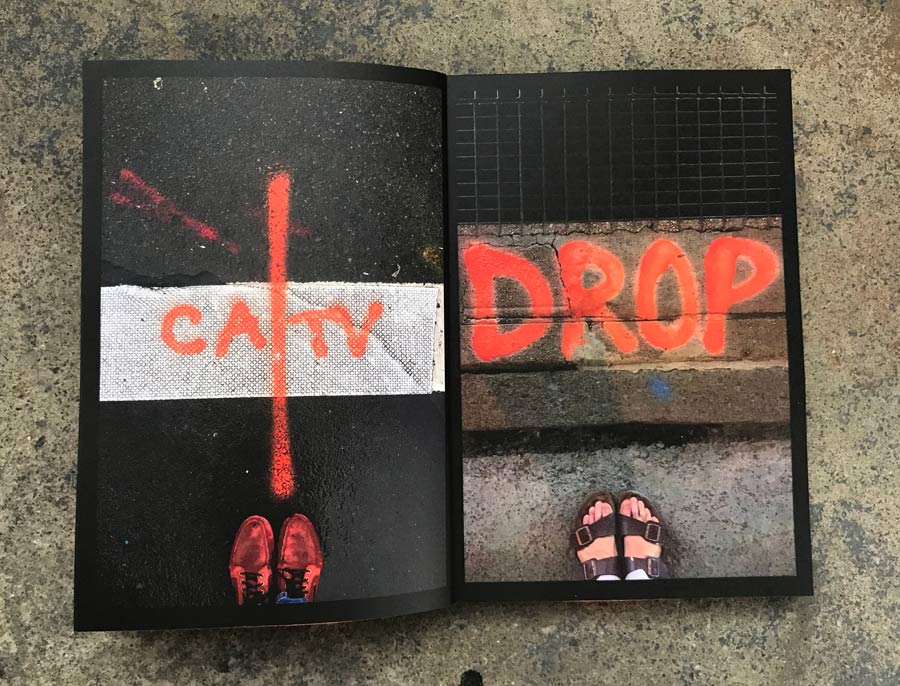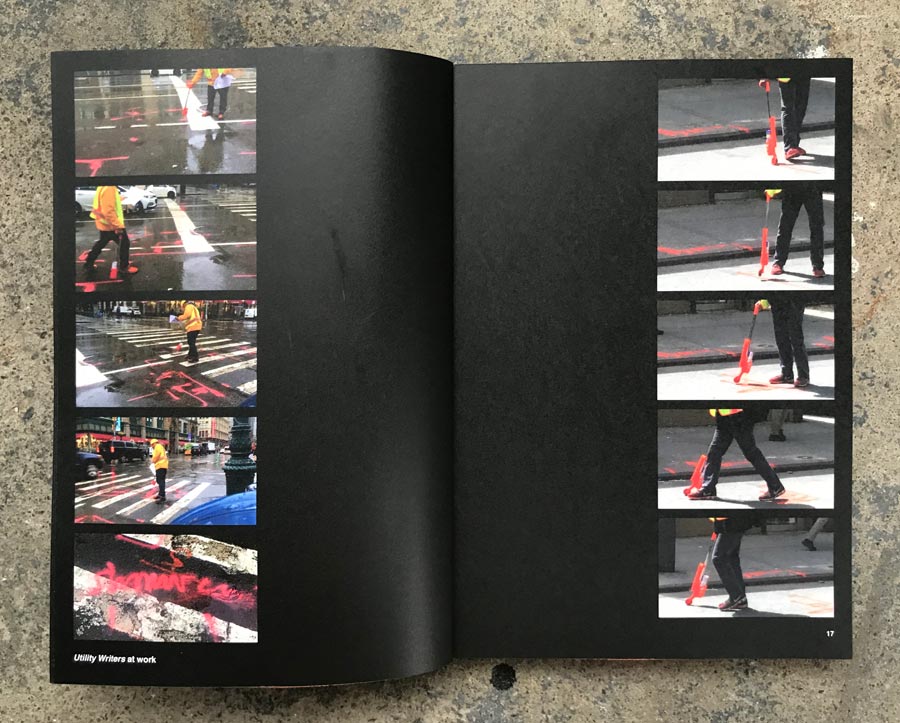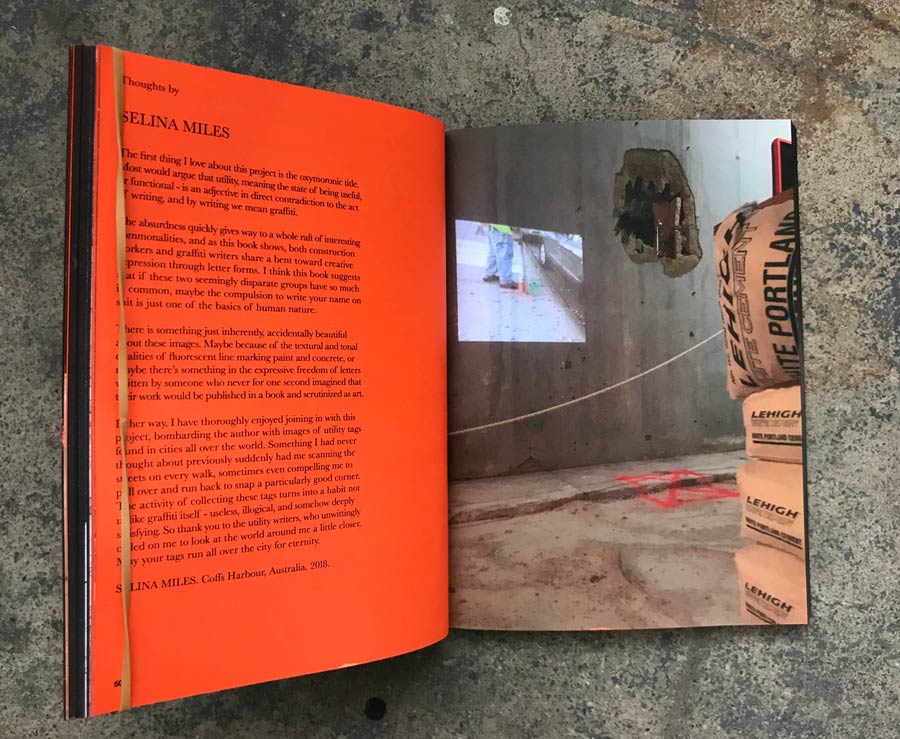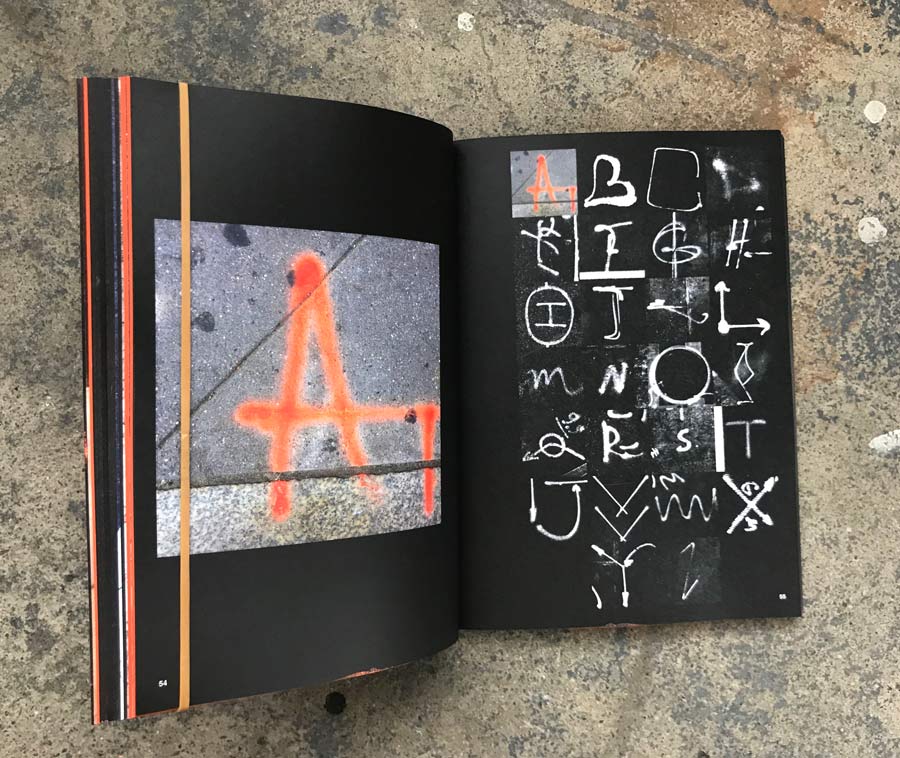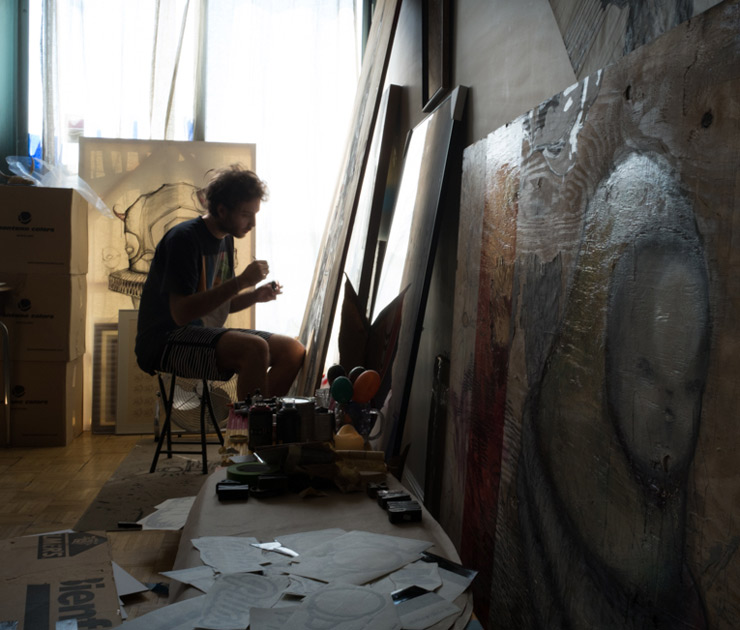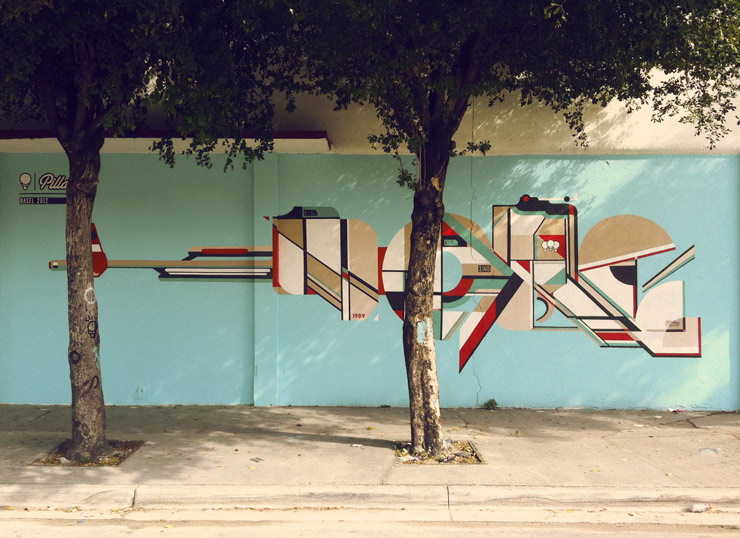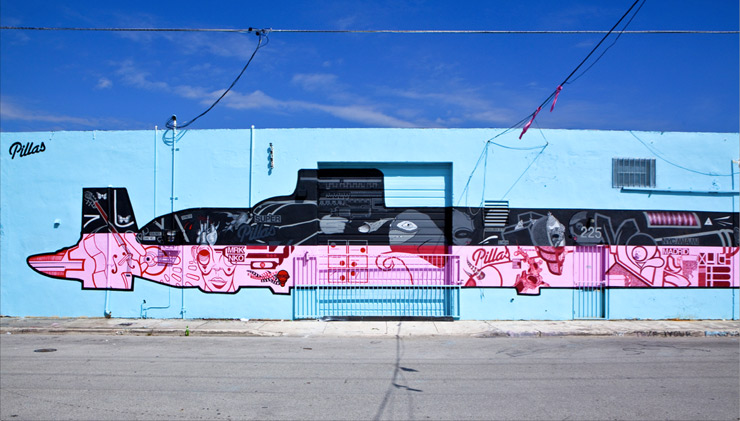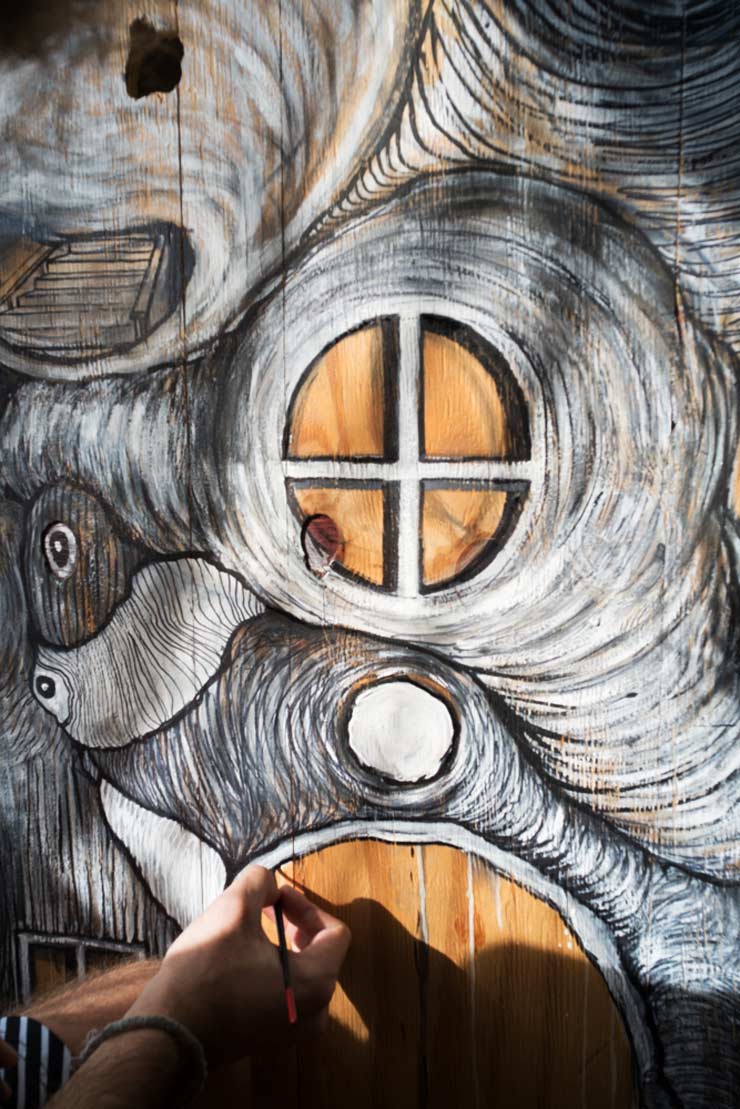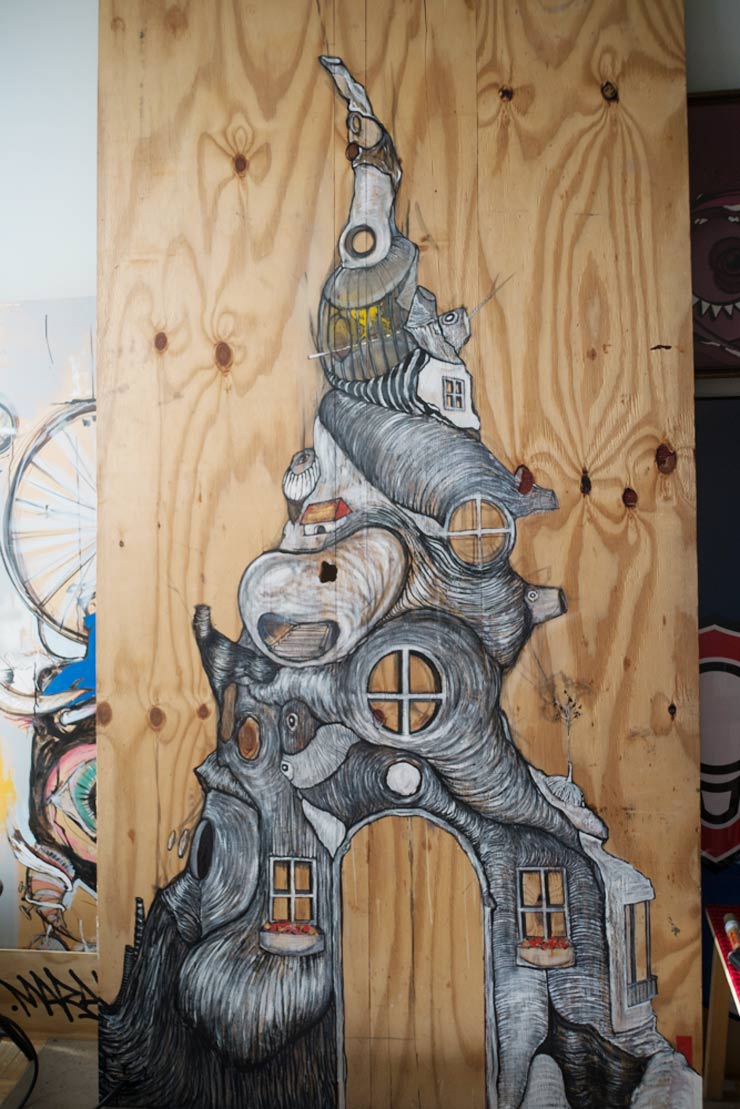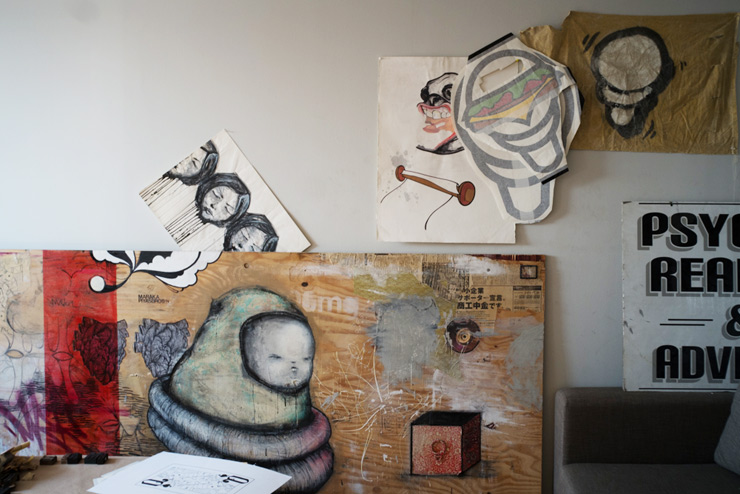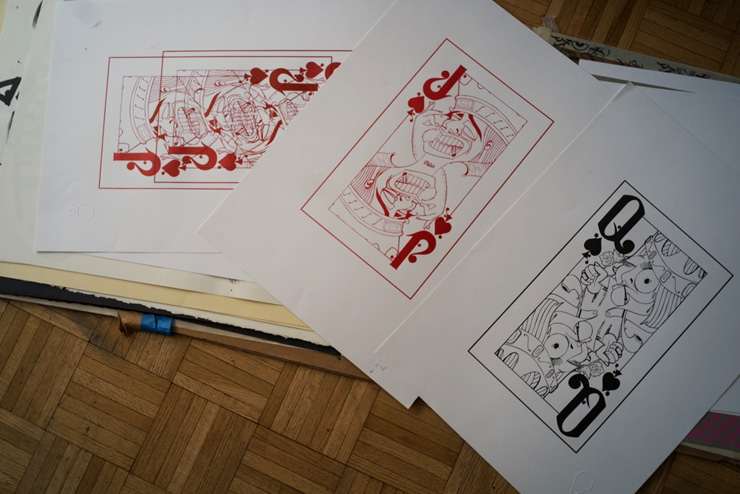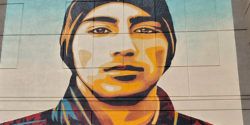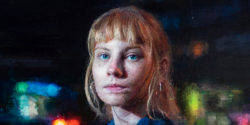The ephemeral qualities of art in the streets are effectively contradicted by this site, and we have captured much in the time we’ve been documenting the scene. Even, so, it is primarily digital, our work, our gift to you. If you want something of more lasting value, buy a book.
This year we had the pleasure of reviewing a number of books, and even appeared in a few ourselves with text and photos. If you’re looking for a lovely gift for the graffiti/Street Art/ Urban Art/ Contemporary Urban Art fan in your life, have a look at this list – our Hot List of 2019.
Futura 2000 “Full Frame” by Magda Danysz
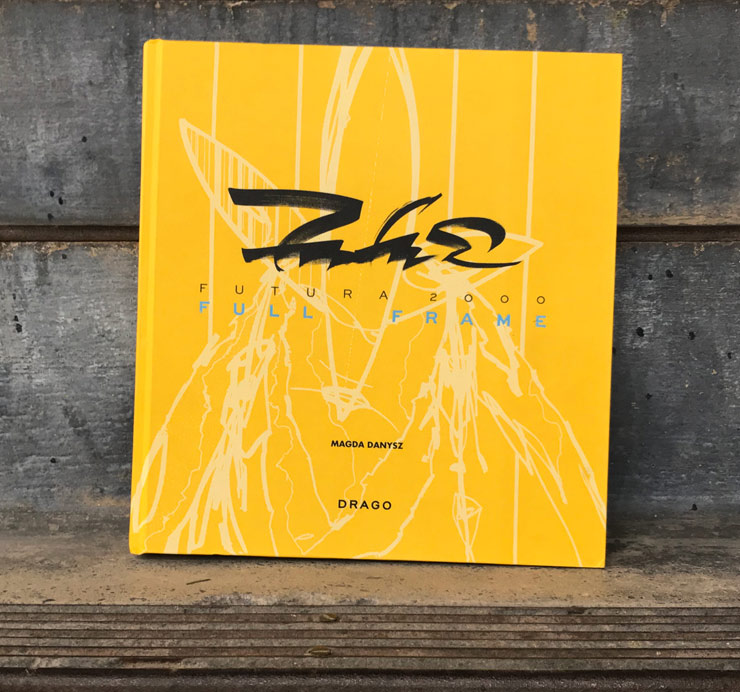
From BSA:
Futura Goes “Full Frame” by Magda Danysz
One benefit of being ahead of your time is that you can paint your own rules, discover your own voice, set a standard. A drawback is that you may have to push forward on your own before you gain support for what you are pursuing. The key is to keep moving.
As Futura pulls fully into the frame of contemporary artist, its important for upcoming artists to remember that he had a long route – including being a bike messenger on Manhattan’s untamed streets to provide for his family – while he was waiting until the rest of the street and art world caught up with him. Now that Street Art has confirmed that his abstract explorations on subway trains were an early sign of what was coming, brands and gallerists and collectors often call. “Full Frame” helps appreciate the body of work he developed during that time.
Hendrik Beirkich: “Siberia”
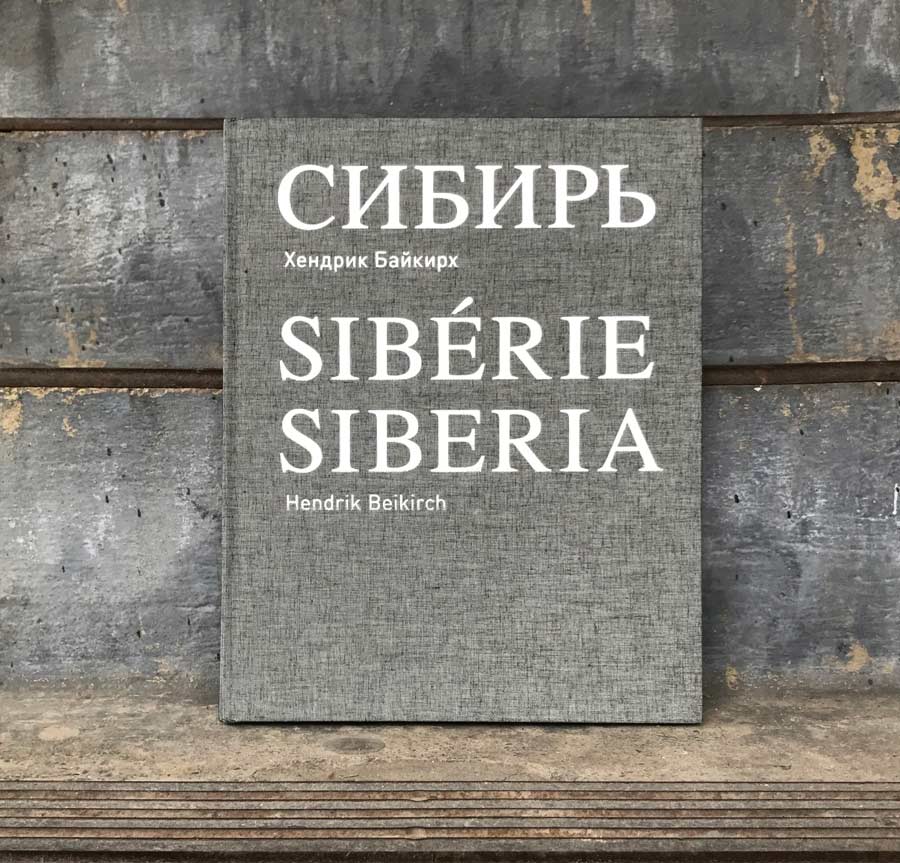
From BSA:
Hendrik Beikirch Traces Lives and Memories in “Siberia”
A corollary to 2015’s “Tracing Morocco” by German street artist Hendrik Beirkirch (aka ECB), a new book travels to meet the rugged inhabitants of Siberia’s countryside in the Russian Federation. The results are starkly genuine, impressively authentic.
Again indulging us in the deep crevasses of many a weathered façade, Siberia invites you to meet the people whom he has met in his travel and presumably befriended, given their ease as subjects. A part of the Jardin Rouge stable over the past few years, Beirkirch has followed the lead of founder Jean Louis Haguenauer, the Frenchman who moved to Russia in the early 1980s and found his own odyssey outside the city to be formative to his character, leading him to write the introduction to the handsome tome.
“Graffiti In New York Hardcore” by Freddy Alva
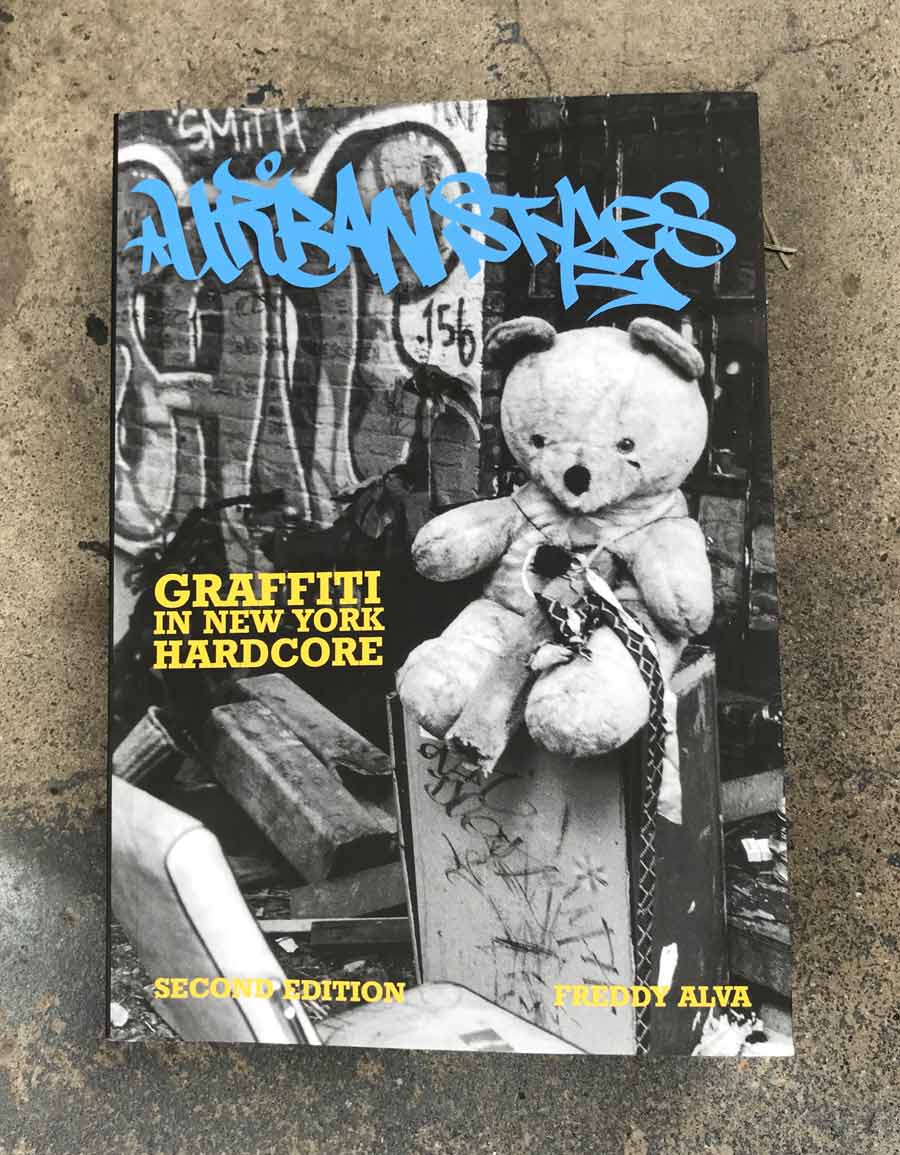
From BSA:
Urban Styles: Graffiti in New York Hardcore
A welcome and necessary addition to any graffiti academic’s library comes Urban Styles: Graffiti in New York Hardcore, carefully documented by Freddy Alva. A thorough recounting of the birth and growth of graffiti through the lense of punk and hardcore scenes after 1980, Alva presents a parallel evolution of a scene as it was interpreted by a largely white constituency of rockers, anarchists, and rebels who grew up in and around New York at that time.
Alva is careful to give due to the graffiti scene that is more often identified as the roots of this practice of urban mark making; the hip-hop culture of primarily black and latino youth during the 1960s and 1970s. As the neoliberal corporate capitalists took over Wall Street and the Reagan White House, a different sort of graffiti writer was often showing up on the street – and often on stage as part of a hardcore band.
“Smashed: The Art Of The Sticker Combo” by I Will Not
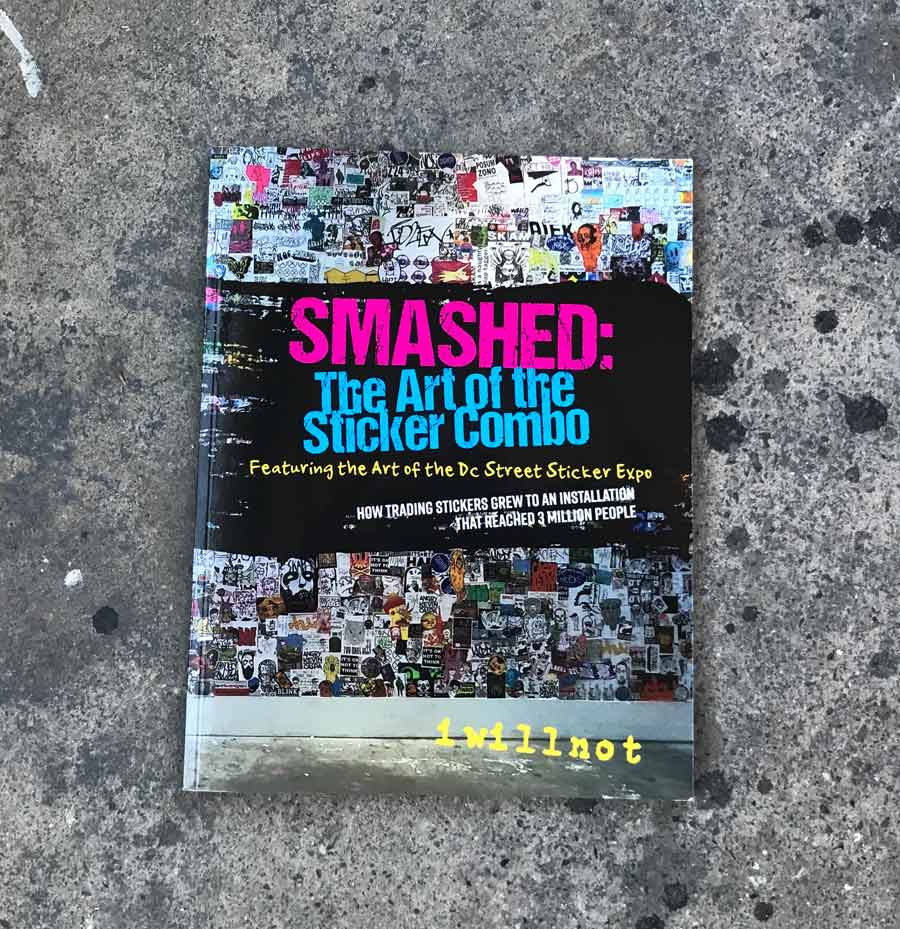
From BSA:
SMASHED: The Art of the Sticker Combo by “I Will Not”
Anyone born after 1960, and that includes most sticker artists on the street today, has a positive association with the humble sticker. From “smiley” and “gold star” rewards stuck to the top of your grade-school class papers to scratch-n-sniff or puffy stickers to MAD magazine product parodies for Quacker Oats and Minute Lice, a lot of kids grew up with good feelings about slaps.
Over the past two decades a serious community of sticker designers, traders, artists, exhibitors and collectors has emerged – virtually assuring that public bathrooms in heavy metal/ punk / hip hop/ alternative music clubs will be covered top to bottom or ‘smashed’ with stickers. Adhesive equivalents of a business card or portfolio sample for many artists, musicians, philosophers, anarchists, and wise guys/gals, stickers are a quick and relatively inexpensive way to get your message out to the world.
“The Rap Quotes Coast To Coast” by Jay Shells
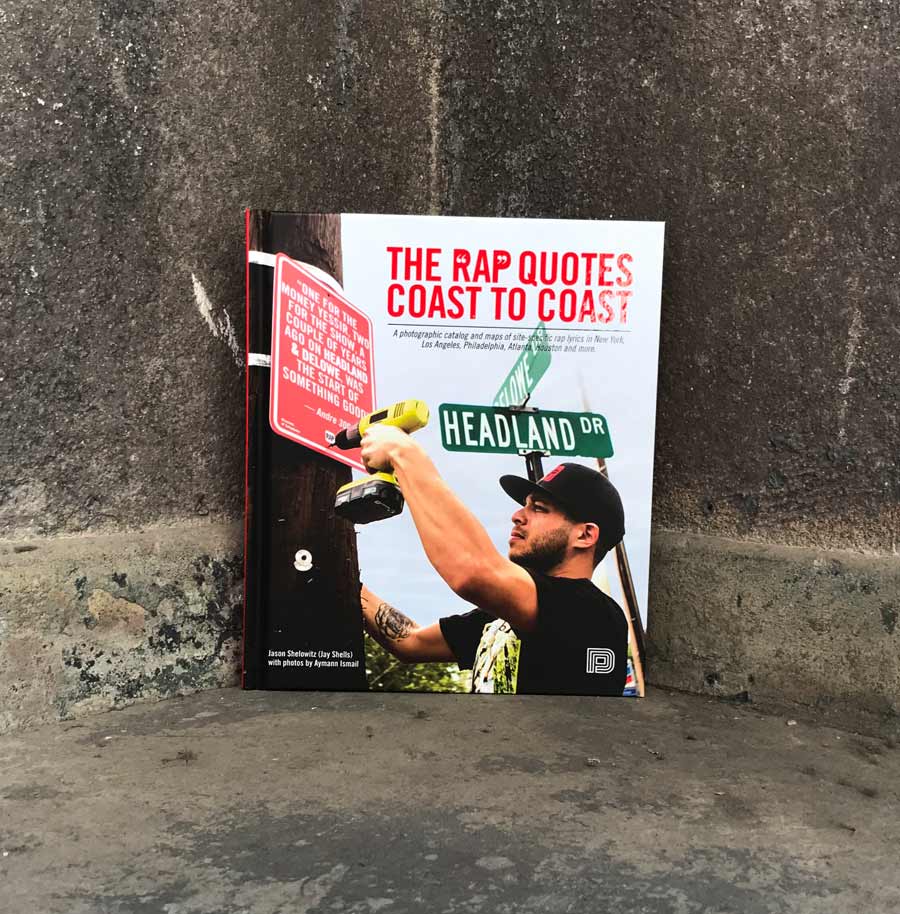
From BSA:
Jay Shells: The “Rap Quotes” Book
Context and placement are key to the success of Street Art. Jay Shells’s project, “The Rap Quotes” more than meets those standards. Indeed his project might be one of the most relevant examples of street art responding to a specific time and place in history that you’ll ever see.
We’ve been repping Jay Shells (Jason Shelowitz) for years since we first found his text-based signage on Brooklyn streets in the oddest of locations. Within a short time they began to make sense, and then brilliant sense – since they acted as a GPS for some of your favorite rap lyrics.
“What if somehow these lyrics existed visually, in the exact location mentioned?” he says to illustrate his original idea.
“Flowers” by Michael De Feo
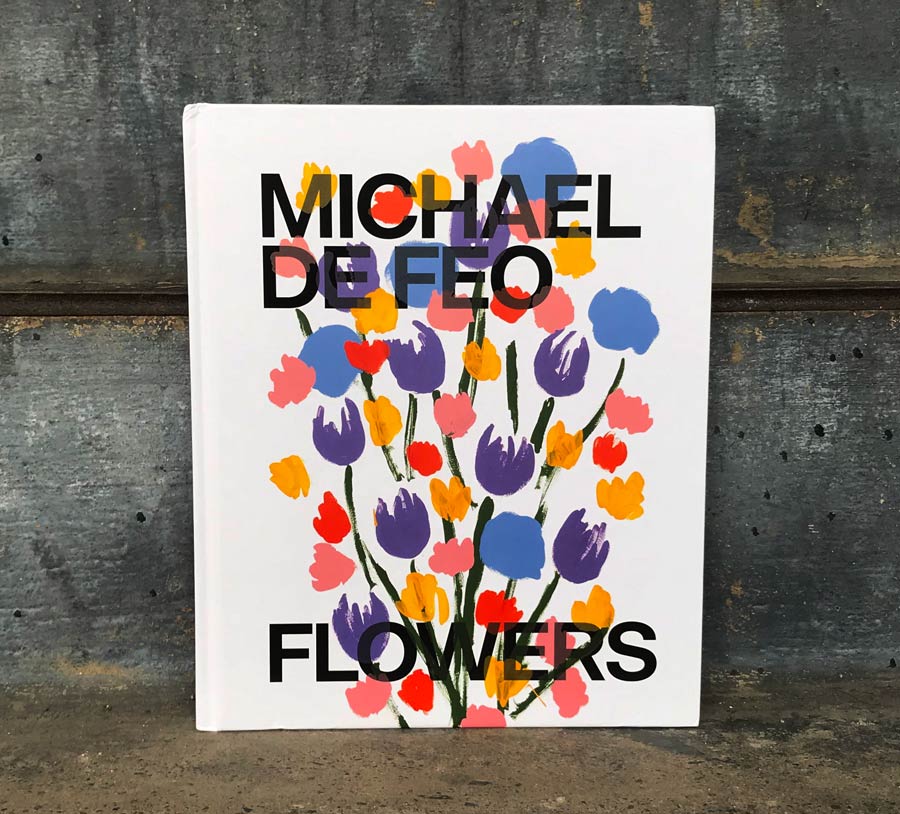
From BSA:
Michael De Feo “FLOWERS”
Amid the detritus of the urban cityscape in decline, it is a welcome contrast to see a dandelion or wild daisy sprouting up from a crack in the sidewalk. Not only is it a reminder of the original inhabitants of the land you are standing on it is an ever-present truth that the plants and the trees and the animals will inherit the earth again, no matter what grand ideas you have for it.
The simplest symbol of nature in the layered debris of urban margins, and a decorative one, is the flower that Micheal De Feo has been “planting” on walls since the early 1990s. The practice has sustained him through many cities and travels abroad, introducing him to artists and fans and collectors, eventually pushing him into explorations of contemporary art.
“Street Art Las Vegas” by William Shea and Patrick Lai
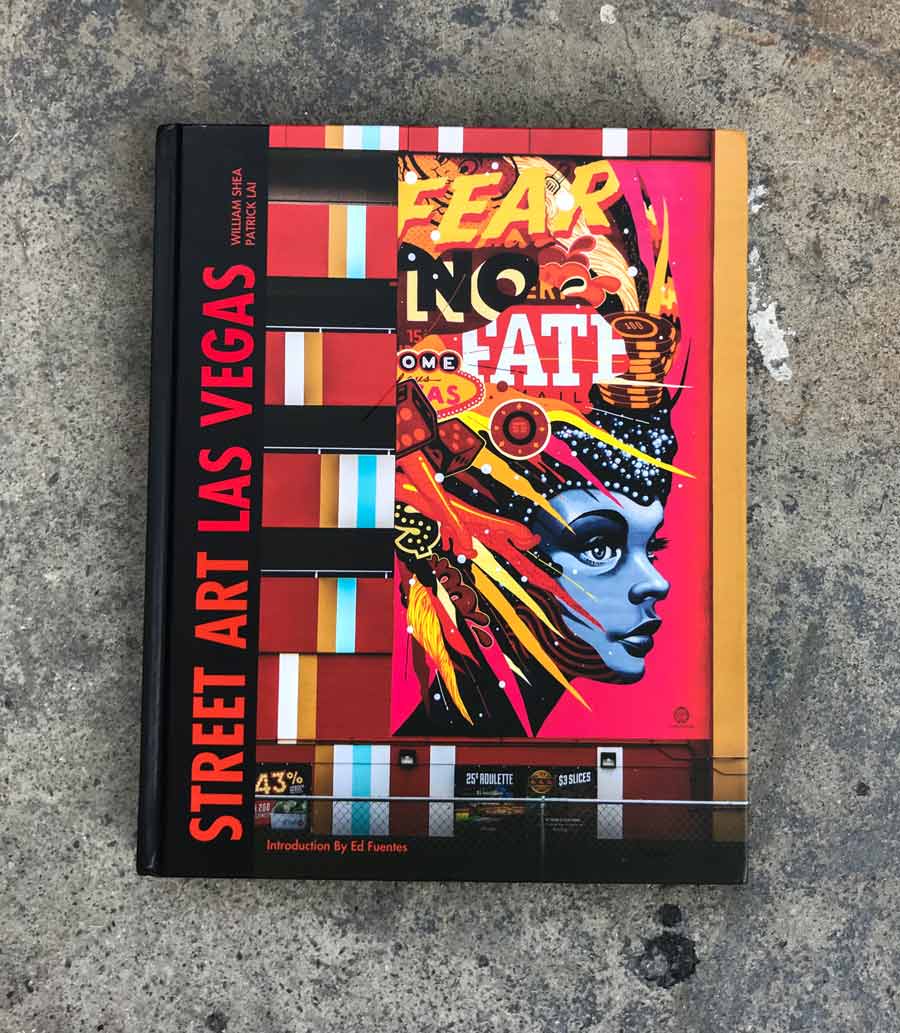
From BSA:
“Street Art Las Vegas” Takes a Tour Beyond the Strip
Before there was a scene in Las Vegas, there was a scene in Las Vegas.
Not in just the shimmering, drink slamming, dice rolling, pink-fur bikini with a rhinestone choker kind of way – that’s the real Las Vegas scene that you may think of – but in the urban art scene as well.
In this context, the Las Vegas graffiti/Street Art scene that existed in the 1990s and 2000s that led up to a massive “Meeting of Styles” in 2012 was lively and varied and leaned more toward lettering, handstyle, and characters. Later, beginning in 2013 with a music/art festival called “Life is Beautiful”, a select group of international Street Artists was paid by public and private interests to help the city tap into a growing interest in urban decoration with eye-popping murals.
“Stencillists / Pochoiristes” by Serge Louis
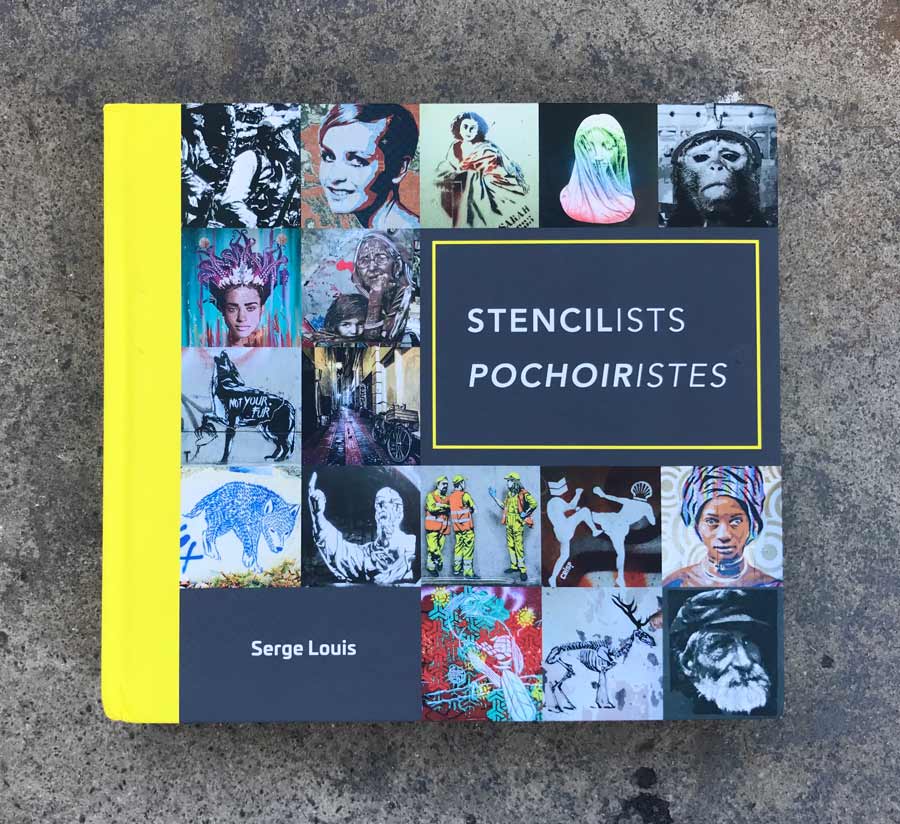
From BSA:
“Stencilists / Pochoiristes” Cuts Across the Street Scene Gallantly, with Serge Louis
Enthusiastic authors like Serge Louis can make Street Art sing, even in print. His new “Stencilists/Pochoiristes” is a finely illustrated hardcover of iconic images from the street. The carefully selected plates are placed within interviews in French and English.
The 17 stencillists whom he has selected are from a populated field of possibilities but he captures a fair range from his travels in Europe – with a few from the US to compliment them.
“Utility Writers” by MRKA
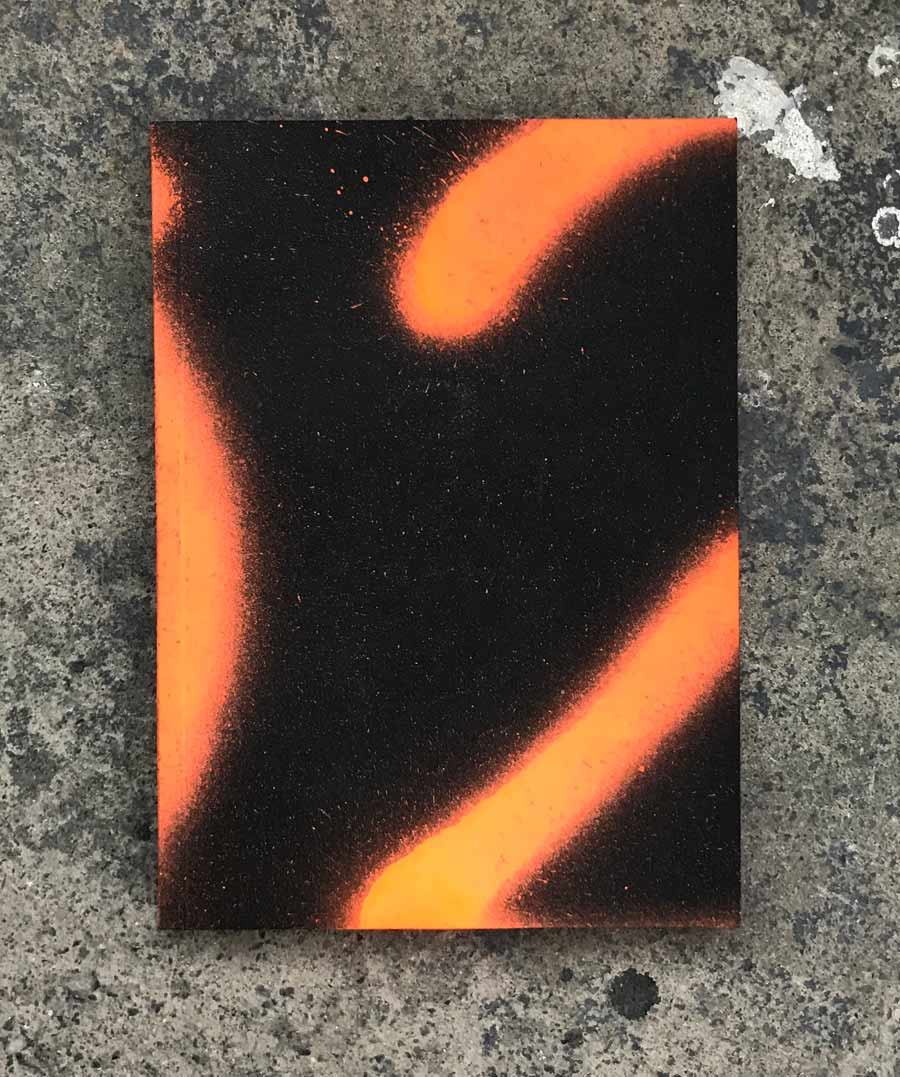
From BSA:
MRKA Gives High Marks to “Utility Writers” in Unique Street Tome
When academics and post-modern esoteric poets plunge into descriptions of graffiti sometimes they proffer colorful didactics and clever terminology like “mark-making” and “gestural” to describe the tagging practice. Conceptualist, graffiti writer, and multimedia artist MRKA takes a step toward the mundane and discovers a new kind of poetry with his “Utility Writers”.
“Stickers Vol 2: More Stuck Up Crap” by DB Burkeman
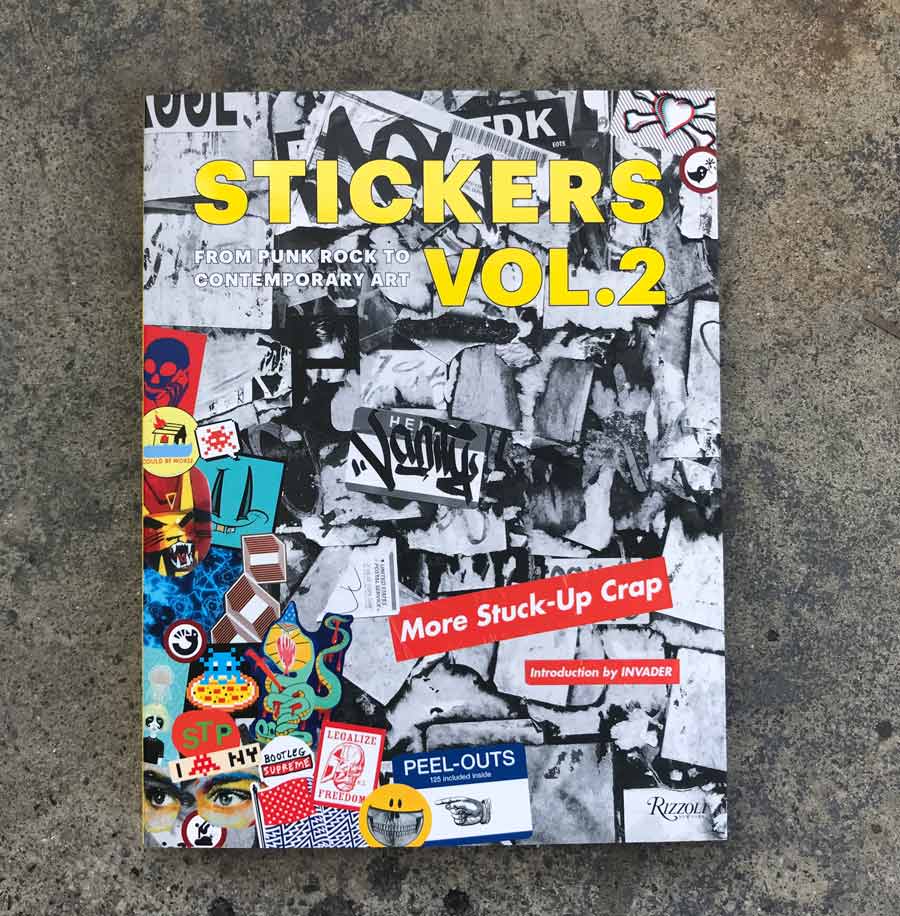
From BSA:
Stickers Vol. 2: More Stuck-Up Crap from DB Burkeman
In the Street Art continuum that presents itself to the passerby on city streets, the early practice of hand-drawn tags on stolen postal stickers eventually morphed into mass-produced slick runs of personal branding and large scale one-off hand rendered/cut paper pieces wheat-pasted with a brush. This story, ever-evolving, is more inclusive than some may think of when you talk generically about “slaps” on a door or on the base of a streetlamp in the city’s visual dialogue. For the book Stickers Vol 2, author DB Burkeman takes a wider survey of the practice, however, and in his second compendium, he goes where BSA has always followed the creative spirit; wherever it leads.
Dont Fret “Life Thus Far”
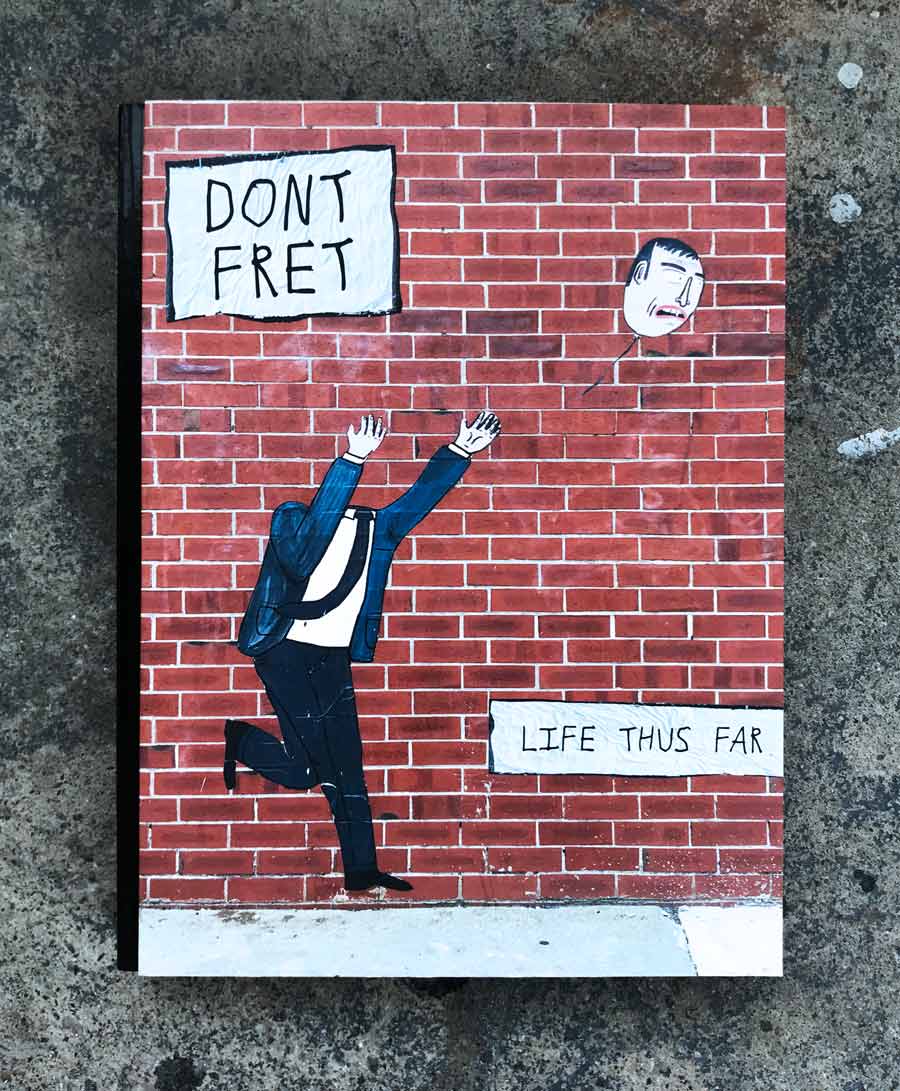
From BSA:
Dont Fret: “Life Thus Far”
Nothing to lose your head about, but you’ll be thrilled to hear about the long-anticipated release of the new monograph by the ingenious troublemaker and largely incognito Chicago Street Artist DONT FRET.
Emerging on the streets for a decade or so with painted wit and misshapen characters wheat-pasted where you least expect them, he’s the sharp observer and human humorist whose work is as brilliant as your cousin Marlene, as funny as Johnny at the funeral home, as handsome as the guys behind the counter at Publican Quality Meats.
Well, maybe not that handsome.
Various & Gould “Permanently Improvised”
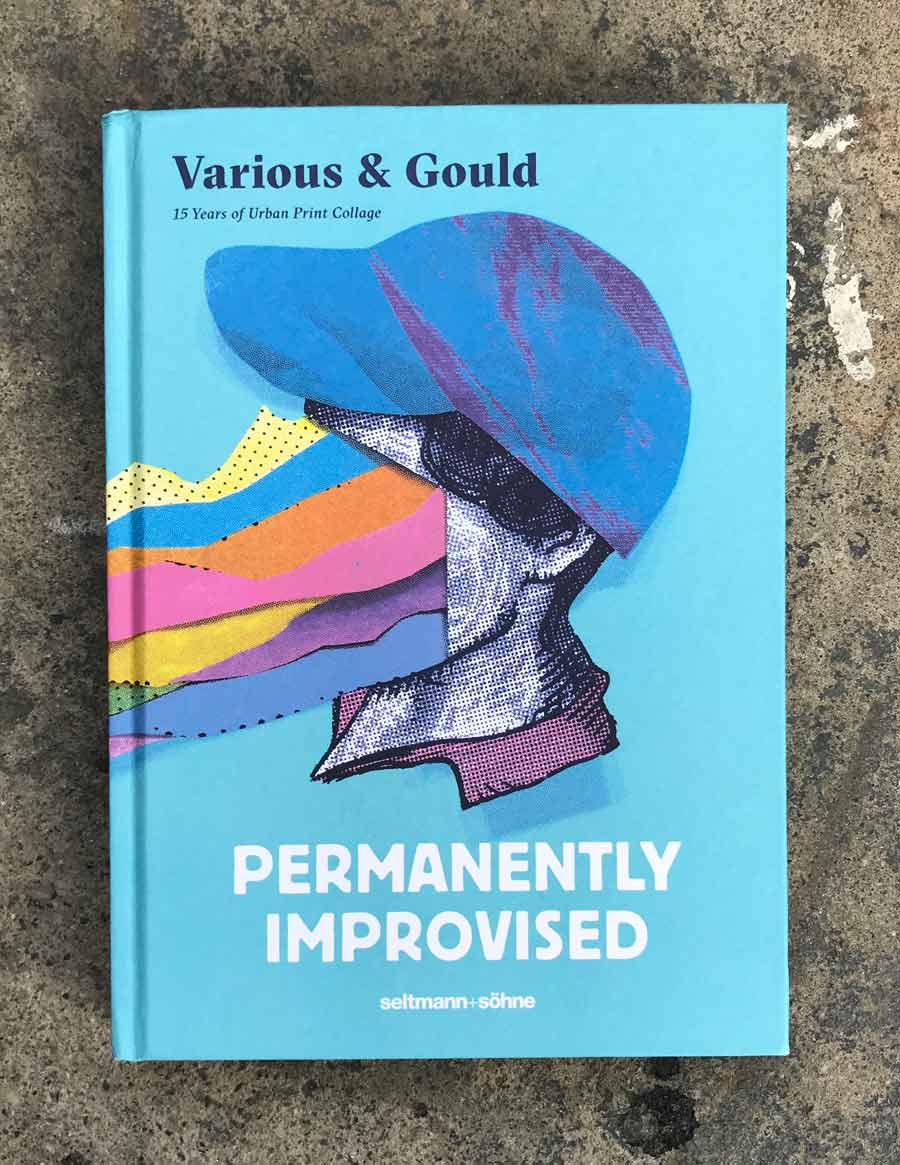
From BSA:
Various & Gould and a Collaged Human Future: “Permanently Improvised”
“Our early conceptions about a future robot world were made from what we knew about automation and mechanics. Thankfully the surrealists and Dadaists were there to help us with flying ships made of tea pots and mystic, amiable metal helpers soldered and screwed together with spare train pistons and kitchen implements. Our helpers were all carefully oiled and pumping, marching in a mathematical concert through dry-ice fog, propelling herky-jerky humanoids up the path to the thoroughly modern world.
Do Rabotniki exist? They are already here. It just took Various & Gould to remind us.”
~ Steven P. Harrington in his essay “A Mixed and Matched Future-Past: Robotiniki” for “Permanently Improvised: 15 years of Urban Print Collage” by Various & Gould
 BROOKLYN STREET ART LOVES YOU MORE EVERY DAY
BROOKLYN STREET ART LOVES YOU MORE EVERY DAY